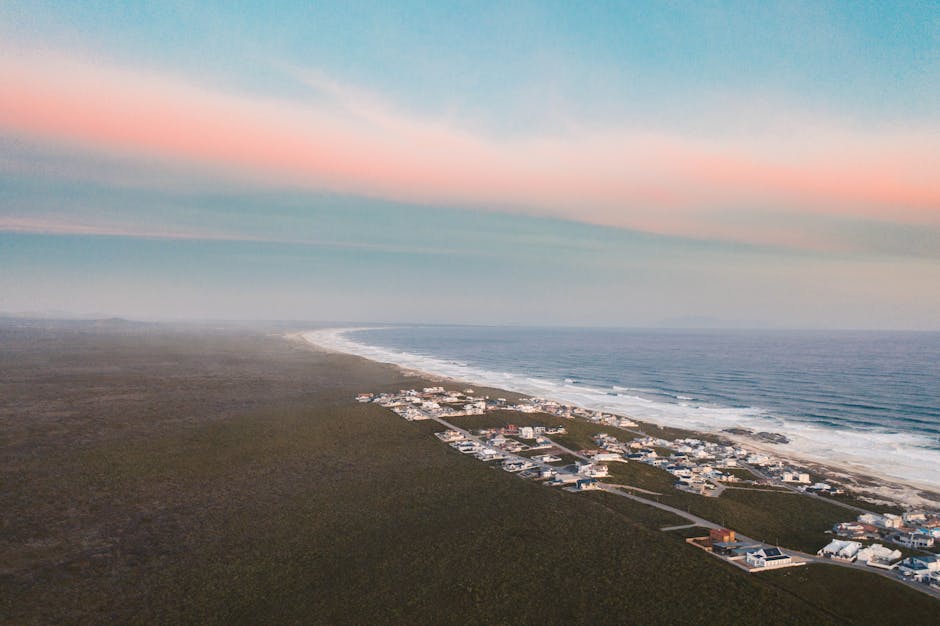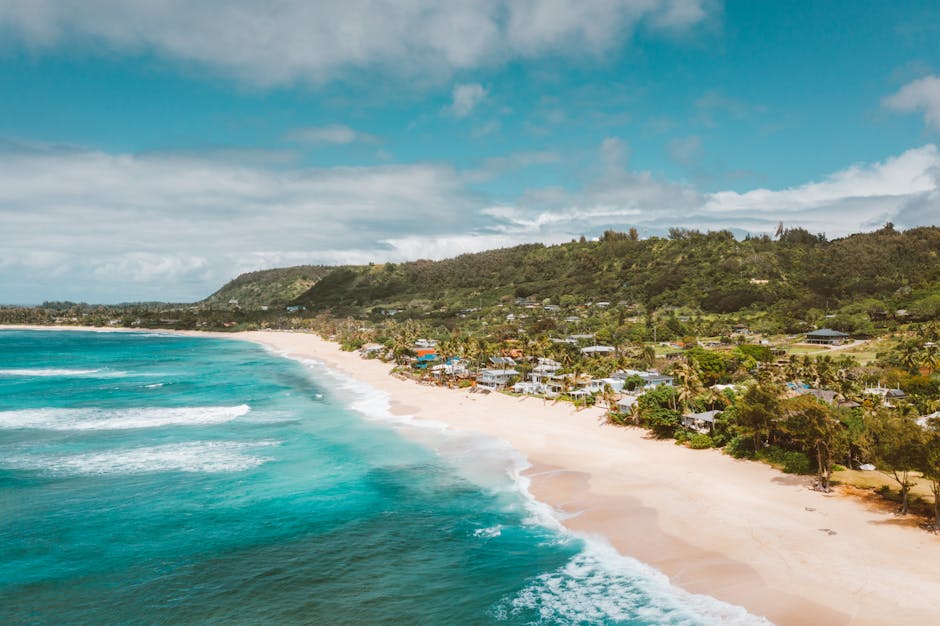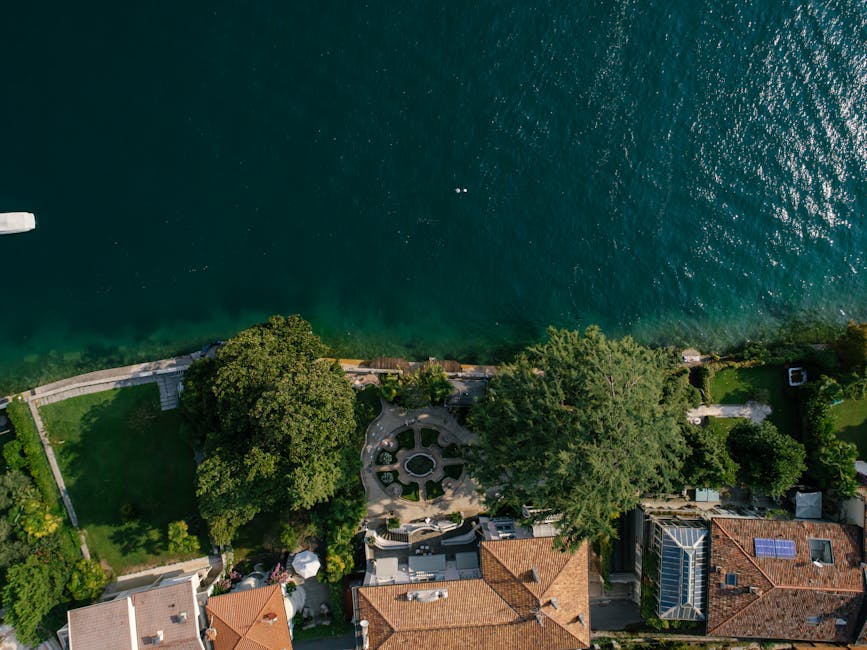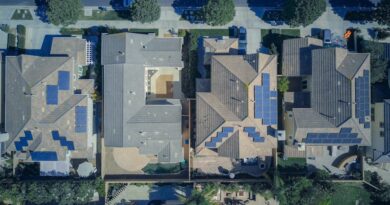Marketing Waterfront Properties with Drones: A Game-Changer in Real Estate
Imagine soaring above a picturesque coastline, capturing stunning aerial views of luxury waterfront properties with ease. This is the power of using drones in marketing waterfront properties. In recent years, drones have revolutionized the real estate industry, offering a unique perspective that traditional photography or videography cannot match. From showcasing expansive oceanfront estates to highlighting secluded beachfront villas, drones have become an invaluable tool for real estate agents and property developers looking to attract discerning buyers.
In this comprehensive guide, we will delve into the world of marketing waterfront properties with drones. We will explore the benefits, challenges, and best practices associated with using drones in real estate marketing. So, fasten your seatbelts and get ready to take off on a journey through the skies of real estate!
The Rise of Drones in Real Estate Marketing

Over the past decade, drones have become increasingly popular in various industries, including real estate. The ability to capture high-quality aerial footage at a fraction of the cost of traditional methods has made drones a game-changer in marketing waterfront properties. Real estate agents are now able to provide potential buyers with immersive experiences, allowing them to explore properties from the comfort of their homes.
One of the key advantages of using drones in real estate marketing is the ability to showcase the surrounding environment of waterfront properties. Aerial footage captured by drones can highlight the proximity to the beach, the layout of the neighborhood, and the overall appeal of the location. This can be particularly appealing to buyers who are looking for a waterfront property as a vacation home or investment.
Additionally, drones can capture unique perspectives that are not possible with traditional photography. By flying drones over and around waterfront properties, real estate agents can showcase the property’s size, architecture, and features in a way that is visually engaging and compelling. This can help properties stand out in a crowded market and attract more potential buyers.
Furthermore, drones can save time and resources for both real estate agents and buyers. Instead of scheduling multiple property visits, buyers can get a comprehensive view of a waterfront property through drone footage, allowing them to make more informed decisions. Real estate agents can also reach a wider audience by promoting properties through online listings and social media platforms with drone videos.
The Benefits of Using Drones in Real Estate Marketing

There are numerous benefits to using drones in real estate marketing, especially when it comes to marketing waterfront properties. Let’s explore some of the key advantages:
1. Enhanced Visual Appeal
Drones can capture stunning aerial footage that showcases the beauty of waterfront properties in a way that traditional photography cannot. The dynamic angles and perspectives provided by drones can make properties appear more attractive and appealing to potential buyers.
2. Increased Engagement
Research has shown that videos are more engaging than static images or text. By using drones to create captivating videos of waterfront properties, real estate agents can grab the attention of potential buyers and keep them interested in the property listing.
3. Cost-Effective Marketing
Compared to traditional methods such as hiring helicopters or planes for aerial photography, using drones is much more cost-effective. Drones are relatively affordable to operate and can provide high-quality aerial footage without breaking the bank.
4. Competitive Advantage
In a competitive real estate market, standing out is crucial. By incorporating drone footage into their marketing strategies, real estate agents can differentiate themselves from competitors and attract more buyers to waterfront properties.
5. Time-Saving
Instead of spending hours traveling to and from properties for photoshoots, drones can capture aerial footage in a fraction of the time. This allows real estate agents to streamline their marketing process and focus on other aspects of their business.
Challenges of Using Drones in Real Estate Marketing

While drones offer many benefits in real estate marketing, there are also some challenges that agents and developers need to consider. Let’s take a look at some of the common challenges of using drones in marketing waterfront properties:
1. Regulations and Compliance
One of the biggest challenges of using drones in real estate marketing is navigating the complex regulations surrounding drone usage. In many countries, drones are subject to strict guidelines regarding where and how they can be flown. Real estate agents need to ensure they are compliant with these regulations to avoid fines or legal issues.
2. Weather Conditions
Weather can have a significant impact on drone operations. Wind, rain, and other adverse weather conditions can make it challenging to capture high-quality aerial footage. Real estate agents may need to reschedule drone flights or wait for suitable weather conditions to get the footage they need.
3. Privacy Concerns
When flying drones over waterfront properties, real estate agents need to be mindful of privacy concerns. Drones can capture footage of neighboring properties, beachgoers, or other individuals without their consent. It is essential to respect the privacy of others and obtain permission before flying drones in certain areas.
4. Technical Limitations
Like any technology, drones have limitations. Battery life, flight time, and camera quality are all factors that can affect the outcome of drone footage. Real estate agents need to be aware of these limitations and plan their drone flights accordingly to capture the best possible footage.
5. Skill and Expertise
Operating drones requires a certain level of skill and expertise. Real estate agents or developers who are new to using drones may need to undergo training to ensure they can operate drones safely and effectively. Investing in training and certification can help agents avoid accidents and produce high-quality footage.
Best Practices for Using Drones in Real Estate Marketing

To maximize the benefits of using drones in real estate marketing, it is essential to follow best practices and guidelines. Here are some tips for real estate agents and developers looking to incorporate drones into their marketing strategies:
1. Plan Your Shots
Before flying your drone, take the time to plan your shots and determine the best angles and perspectives to capture. Think about the key features of the waterfront property you want to highlight and create a shot list to ensure you capture everything you need.
2. Check the Weather
Always check the weather conditions before flying your drone. Avoid flying in high winds, rain, or other adverse weather conditions that could affect the safety and quality of your footage. Wait for clear skies and calm winds for the best results.
3. Respect Privacy
Be mindful of privacy concerns when flying drones over waterfront properties. Avoid capturing footage of neighboring properties, people on the beach, or other private areas without permission. Always respect the privacy of others and obtain consent when necessary.
4. Invest in Quality Equipment
Invest in high-quality drones and camera equipment to ensure you capture professional-looking footage. Drones with stabilized gimbals, high-resolution cameras, and long battery life are essential for creating engaging videos of waterfront properties.
5. Edit Your Footage
After capturing aerial footage with your drone, take the time to edit and enhance the footage to create a polished final product. Use editing software to trim, color correct, and add music or voiceovers to your videos to make them more engaging and professional.
6. Promote Your Videos
Once you have created compelling drone videos of waterfront properties, make sure to promote them effectively. Share your videos on social media platforms, real estate websites, and other online channels to reach a wider audience and attract potential buyers.
Future Implications of Using Drones in Real Estate Marketing
The future of real estate marketing is undoubtedly intertwined with the use of drones. As technology continues to advance, drones are becoming more sophisticated, affordable, and accessible to real estate agents and developers. In the coming years, we can expect to see even more innovative uses of drones in marketing waterfront properties.
One potential future implication of using drones in real estate marketing is the use of virtual reality (VR) and augmented reality (AR) technologies. By integrating drone footage with VR and AR platforms, buyers can experience waterfront properties in a more immersive and interactive way. This can help agents showcase properties to buyers who are unable to visit in person or who want a more personalized viewing experience.
Another future implication is the use of artificial intelligence (AI) and machine learning algorithms to analyze drone footage and predict buyer preferences. By analyzing aerial footage of waterfront properties, AI algorithms can identify trends, patterns, and features that are most appealing to buyers. This can help agents tailor their marketing strategies to attract the right buyers to waterfront properties.
Common Misconceptions about Using Drones in Real Estate Marketing
Despite the many benefits of using drones in real estate marketing, there are some common misconceptions that persist. Let’s debunk a few of these misconceptions:
1. Drones are Expensive to Operate
While drones do require an initial investment, they are relatively affordable to operate in the long run. The cost of hiring a drone operator or purchasing a drone is often outweighed by the benefits of using drones in marketing waterfront properties.
2. Drones are Difficult to Operate
Operating drones does require some skill and expertise, but with training and practice, real estate agents can learn to use drones effectively. Many drones come with built-in features that make flying them easy and intuitive, even for beginners.
Conclusion
To wrap things up, marketing waterfront properties with drones is a game-changer in the real estate industry. Drones offer a unique perspective that can enhance the visual appeal, engagement, and competitiveness of waterfront properties. By following best practices, overcoming challenges, and embracing the future implications of using drones, real estate agents and developers can take their marketing strategies to new heights.
So, whether you are a buyer looking for your dream waterfront property or a real estate agent looking to attract more clients, consider the power of drones in marketing waterfront properties. The sky’s the limit when it comes to showcasing the beauty and allure of waterfront properties with drones!




